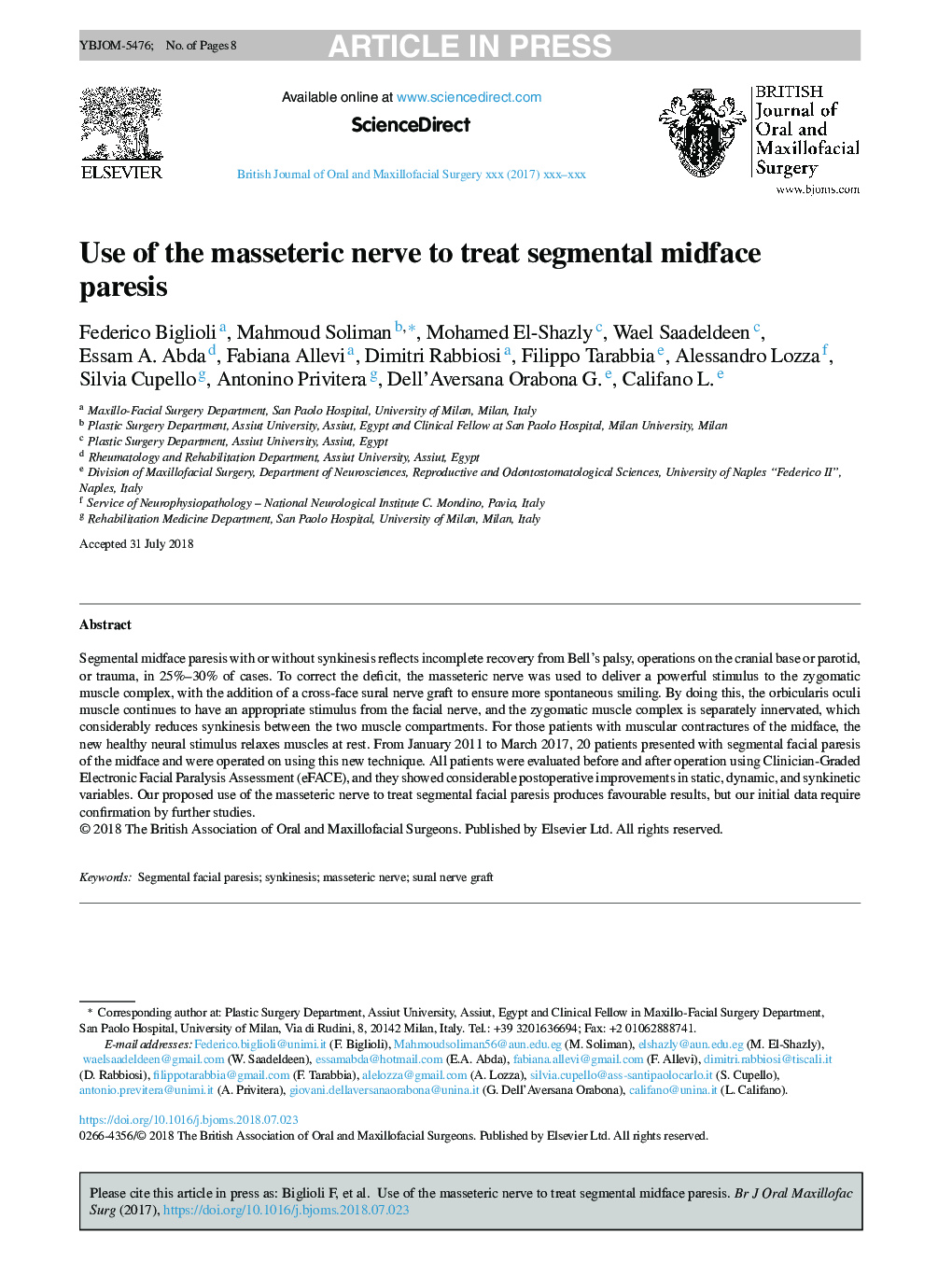| Article ID | Journal | Published Year | Pages | File Type |
|---|---|---|---|---|
| 11018780 | British Journal of Oral and Maxillofacial Surgery | 2018 | 8 Pages |
Abstract
Segmental midface paresis with or without synkinesis reflects incomplete recovery from Bell's palsy, operations on the cranial base or parotid, or trauma, in 25%-30% of cases. To correct the deficit, the masseteric nerve was used to deliver a powerful stimulus to the zygomatic muscle complex, with the addition of a cross-face sural nerve graft to ensure more spontaneous smiling. By doing this, the orbicularis oculi muscle continues to have an appropriate stimulus from the facial nerve, and the zygomatic muscle complex is separately innervated, which considerably reduces synkinesis between the two muscle compartments. For those patients with muscular contractures of the midface, the new healthy neural stimulus relaxes muscles at rest. From January 2011 to March 2017, 20 patients presented with segmental facial paresis of the midface and were operated on using this new technique. All patients were evaluated before and after operation using Clinician-Graded Electronic Facial Paralysis Assessment (eFACE), and they showed considerable postoperative improvements in static, dynamic, and synkinetic variables. Our proposed use of the masseteric nerve to treat segmental facial paresis produces favourable results, but our initial data require confirmation by further studies.
Related Topics
Health Sciences
Medicine and Dentistry
Dentistry, Oral Surgery and Medicine
Authors
Federico Biglioli, Mahmoud Soliman, Mohamed El-Shazly, Wael Saadeldeen, Essam A. Abda, Fabiana Allevi, Dimitri Rabbiosi, Filippo Tarabbia, Alessandro Lozza, Silvia Cupello, Antonino Privitera, Dell'Aversana Orabona G., Califano L.,
